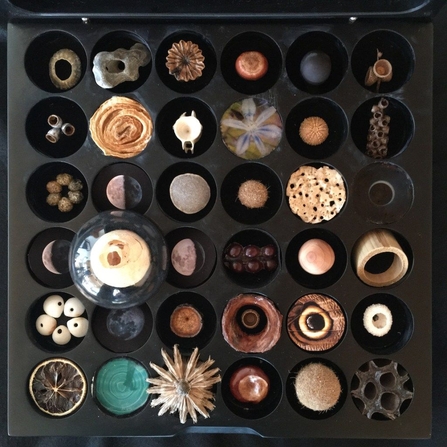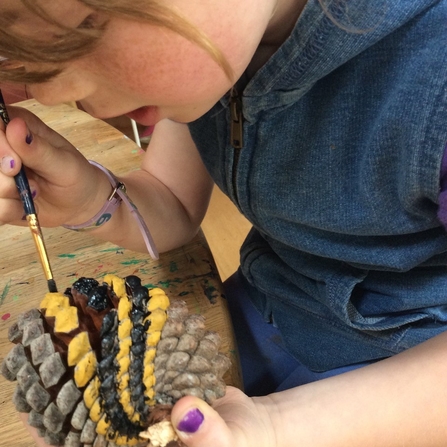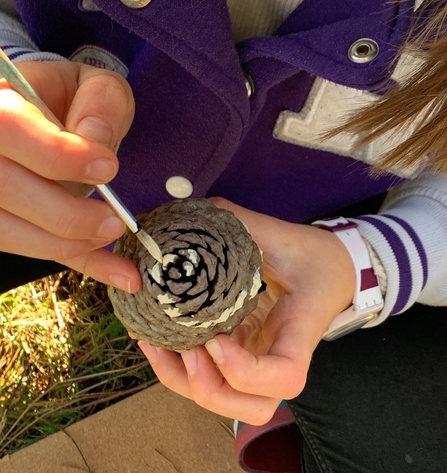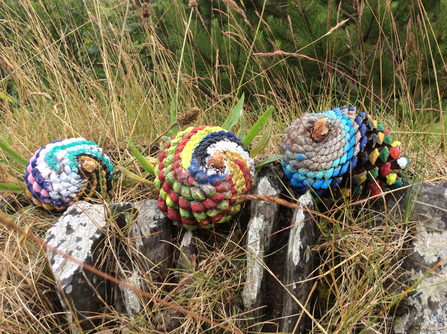I have a superpower and I’d like to share it with you. I see patterns in lots of things. I realise maybe it doesn’t sound like a really cool superhero type power, but it actually gives me a clever skill in understanding how something grows.

My name is Lisa and I run The Smart Happy Project which is all about developing your superpower to find the patterns in nature.
I’ve worked particularly hard in developing this superpower in the natural world. I can see shapes in flowers, swirls in shells and also patterns in time.
I look at things really hard, not just seeing them but really observing them.

There are some patterns in nature that I like to paint onto so that the pattern really pops out for others to see. And this is what I wanted to share with you today.
In this video I show you how to paint the spiral pattern in the pine cone. The sun was out and my dogs joined me too! Click the play button on the video below to watch!

My daughter is 11, (that might be the same age as you?) she has often painted these with me and I’ve added some photos here of those she has painted before. But this time she wanted to be my camera assistant. I think she did a good job. She did paint some pine cones after we’d finished with the video too.
I hope you enjoy it and I’d love to see your painted pine cones!

Parent/Educator notes
Phyllotaxis is a word of Greek origin meaning ‘leaf arrangement’. it is used to express the spiral arrangement of seeds most commonly seen in a pine cone. This arrangement consists of two opposite spinning spirals. The correlation between the number of these spirals in each direction and the Fibonacci numbers is often remarked upon. This is because of the divine ratio. The divine ratio is a contributing factor to the numbers that make up the Fibonacci sequence and a contributing factor to the plants desire for each seed to find the most ample space to flourish in.
This phyllotaxis pattern is present throughout nature. In the pine cone or pineapple as mentioned, in seeds of sunflower, daisies and strawberries or other berries. Also in the growth of leaves around an upright stem. For more info on phyllotaxis and how it appears visit https://thesmarthappyproject.com/fibonacci-in-a-sunflower/

About Lisa Lillywhite
Lisa lives in Ireland with her partner and their two daughters. She started The Smart Happy Project to introduce families to the wonders of natural shapes and patterns. How numbers are manifest in nature for us all to see and how we can understand these through crafts. Her studio space has been overtaken by a considerable amount of natural curiosities she has collected together with the geometric constructions. Following in the footsteps of philosophers and geometers through the ages, Lisa reveals our journey as humans through a natural world governed by patterns we can see and understand.

